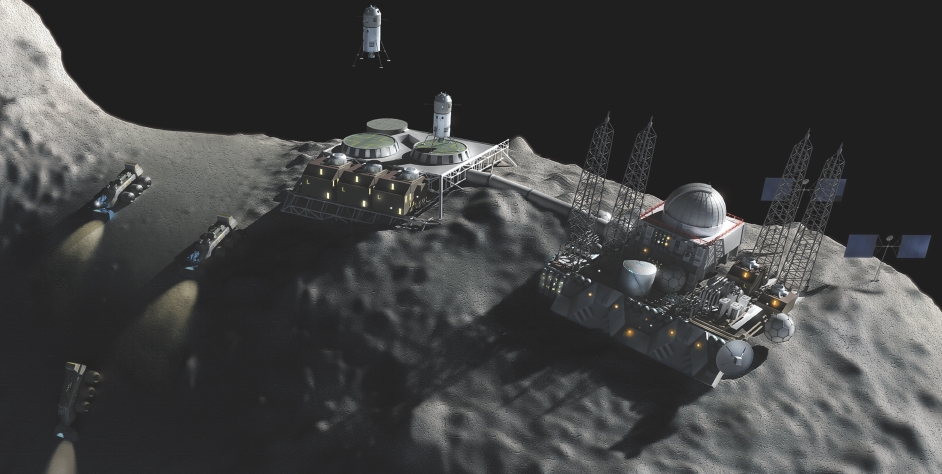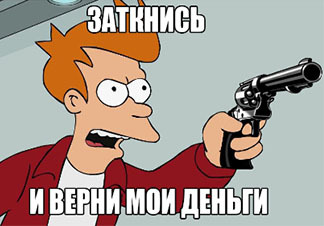Luxembourg legalizes resource extraction on asteroids by 2017
On June 3, 2016, the Luxembourg Ministry of Economy announced the creation of a legislative framework governing the development of asteroids - the extraction of minerals and platinum metals. Although the law is being developed for the territory of the Grand Duchy, but, unlike the legislative initiatives already adopted in the United States in 2015, any foreign company with a representative office in Luxembourg will be able to take part in the development and benefit from the fruits of its work.

According to the new legislation and in accordance with the international convention, the companies developing near-earth objects also receive the right to the extracted resources. The mission of the state in this case will be limited to issuing licenses and monitoring the activities of mining companies, in accordance with the international Agreement on Space of 1967, defining the position that outer space cannot belong to any single country.
According to the Ministry, experts in the field of international space law will take an active part in the development of the provisions of the law. The basis of the legislative framework will also take into account the views of experts and research data of the University of Luxembourg on space mining of minerals. In accordance with the plans of the Ministry and the Government of the country, the new legislation should enter into force no later than 2017. The rights of companies to the extraction of minerals in space, the US Congress approved at the end of 2015. But the fundamental difference in the legislation is still there: the law, previously adopted in the United States, guarantees the rights to resources extracted in space only to citizens of their country. Interestingly, the legislative treaty-based international initiative of 1967, referred to in the announcement of the article, called the Outer Space Treaty , was also developed, agreed and approved in the United States by 124 countries and is still in force. According to the document, the Moon and other celestial bodies "cannot be appropriated by any nation, by use or settlement, or in any other way." According to the logic of this law, everything that is extracted in space belongs to all nations. Thus, in the future, space exploration may well turn into a conflict of economic interests.
')
Perspectives
Asteroids - living witnesses of the processes occurring in the solar system at the stage of formation - the richest sources of valuable metals and other elements that exist and are mined on Earth in limited quantities. The study of the spectral characteristics of asteroids made it possible to divide them into several classes that unite bodies according to the predominant content of the elements that make up their solid body. The most common within reach of celestial bodies belong to classes C (75%), S (17%) and M (most remaining), respectively carbon, silicon and metal. It should be noted that according to preliminary estimates of the reserves of iron-nickel ores “in the depths” of only one of the largest known M-class asteroids, Psyche, would be enough to meet the needs of humanity for the next few million years.
At the same time, hundreds of thousands of asteroids are currently discovered in the solar system. As of January 11, 2015, there were 670,474 objects in the information database. The orbits of 422 636 of them are precisely identified and assigned an official number, more than 19 000 of them had officially approved names at that time. According to preliminary estimates, a total of from 1.1 to 1.9 million objects with dimensions of more than 1 km can be located in the solar system. Most of the currently known asteroids are distributed within the asteroid belt located between the orbits of Mars and Jupiter.
It is clear that the prospects for the development of wealth occurring in the thickness of asteroids distant at such distances still look more than foggy. Today we are talking about more nearby, near-Earth orbits, located in the space between Mars and the Moon within the reach of the routes of modern spacecraft. According to preliminary estimates by experts, the number of asteroids that are of interest to researchers as objects of mining in this area of the near-earth orbit exceeds 12,000, which is also very, very much.
Background and opportunities
The initiative of tiny Luxembourg, aimed at the exploration of the bowels of the vast universe, is not accidental. Not everyone knows that the Grand Duchy is a long-standing and active participant in international processes related to the space industry, in particular, with the launch of satellites into orbit and the development of related technologies. And it is in Luxembourg that the Headquarters of one of the global satellite operating companies SES SA is located .
Today, Luxembourg is working closely with leading industry companies and organizations in the US and Europe, and quite successfully masters the latest technologies that in the future will be able to allow using asteroids for the extraction of platinum group metals and other valuable raw materials.
The plans of the Duchy to participate in the global program for the extraction of valuable resources on near-Earth objects, the Deputy Prime Minister of Luxembourg announced in February 2016. The “old-timers” of the industry, American companies represented in Luxembourg, Space Industries and Planetary Resources, were invited as promising partners by the Ministry. Both companies are among the leaders in the development of technologies related to long-term space exploration and production.
Already in May, the Luxembourg government signed a memorandum with Deep Space Industries, under which plans were announced to develop and launch a company into the near-earth orbit of the spacecraft Prospector-X. The main mission of the probe is to check the performance and efficiency of technologies developed on Earth for the extraction of resources in space. In case of a positive result, at the next stage of the program, it is planned to develop and launch an asteroid (which is not reported) of the Prospector-1 apparatus, which will collect and transmit to Earth information about the prospects of the asteroid as an object of extraction.
The Government of Luxembourg plans to act as a co-investor and in the near future initially allocate about 200 million euros for research in this area.
Jean-Jacques Dordain, head of the European Space Agency, told reporters of the FT publication about his confidence in the scientific and economic potential of Luxembourg to implement this idea, especially since the basic technologies for this have already been developed, he said: "We know how to get to asteroids how to drill there and how to deliver samples back to Earth. ” According to Dorden, the ultimate cost of developing the extractive industry in outer space is estimated at tens of billions of dollars, but "this will create a global market of trillions."
That's all, with you there was a simple service for choosing sophisticated Dronk.Ru equipment. Do not forget to subscribe to our blog , there will be many more interesting ...


According to the new legislation and in accordance with the international convention, the companies developing near-earth objects also receive the right to the extracted resources. The mission of the state in this case will be limited to issuing licenses and monitoring the activities of mining companies, in accordance with the international Agreement on Space of 1967, defining the position that outer space cannot belong to any single country.
According to the Ministry, experts in the field of international space law will take an active part in the development of the provisions of the law. The basis of the legislative framework will also take into account the views of experts and research data of the University of Luxembourg on space mining of minerals. In accordance with the plans of the Ministry and the Government of the country, the new legislation should enter into force no later than 2017. The rights of companies to the extraction of minerals in space, the US Congress approved at the end of 2015. But the fundamental difference in the legislation is still there: the law, previously adopted in the United States, guarantees the rights to resources extracted in space only to citizens of their country. Interestingly, the legislative treaty-based international initiative of 1967, referred to in the announcement of the article, called the Outer Space Treaty , was also developed, agreed and approved in the United States by 124 countries and is still in force. According to the document, the Moon and other celestial bodies "cannot be appropriated by any nation, by use or settlement, or in any other way." According to the logic of this law, everything that is extracted in space belongs to all nations. Thus, in the future, space exploration may well turn into a conflict of economic interests.
')
Perspectives
Asteroids - living witnesses of the processes occurring in the solar system at the stage of formation - the richest sources of valuable metals and other elements that exist and are mined on Earth in limited quantities. The study of the spectral characteristics of asteroids made it possible to divide them into several classes that unite bodies according to the predominant content of the elements that make up their solid body. The most common within reach of celestial bodies belong to classes C (75%), S (17%) and M (most remaining), respectively carbon, silicon and metal. It should be noted that according to preliminary estimates of the reserves of iron-nickel ores “in the depths” of only one of the largest known M-class asteroids, Psyche, would be enough to meet the needs of humanity for the next few million years.
At the same time, hundreds of thousands of asteroids are currently discovered in the solar system. As of January 11, 2015, there were 670,474 objects in the information database. The orbits of 422 636 of them are precisely identified and assigned an official number, more than 19 000 of them had officially approved names at that time. According to preliminary estimates, a total of from 1.1 to 1.9 million objects with dimensions of more than 1 km can be located in the solar system. Most of the currently known asteroids are distributed within the asteroid belt located between the orbits of Mars and Jupiter.
It is clear that the prospects for the development of wealth occurring in the thickness of asteroids distant at such distances still look more than foggy. Today we are talking about more nearby, near-Earth orbits, located in the space between Mars and the Moon within the reach of the routes of modern spacecraft. According to preliminary estimates by experts, the number of asteroids that are of interest to researchers as objects of mining in this area of the near-earth orbit exceeds 12,000, which is also very, very much.
Background and opportunities
The initiative of tiny Luxembourg, aimed at the exploration of the bowels of the vast universe, is not accidental. Not everyone knows that the Grand Duchy is a long-standing and active participant in international processes related to the space industry, in particular, with the launch of satellites into orbit and the development of related technologies. And it is in Luxembourg that the Headquarters of one of the global satellite operating companies SES SA is located .
Today, Luxembourg is working closely with leading industry companies and organizations in the US and Europe, and quite successfully masters the latest technologies that in the future will be able to allow using asteroids for the extraction of platinum group metals and other valuable raw materials.
The plans of the Duchy to participate in the global program for the extraction of valuable resources on near-Earth objects, the Deputy Prime Minister of Luxembourg announced in February 2016. The “old-timers” of the industry, American companies represented in Luxembourg, Space Industries and Planetary Resources, were invited as promising partners by the Ministry. Both companies are among the leaders in the development of technologies related to long-term space exploration and production.
Already in May, the Luxembourg government signed a memorandum with Deep Space Industries, under which plans were announced to develop and launch a company into the near-earth orbit of the spacecraft Prospector-X. The main mission of the probe is to check the performance and efficiency of technologies developed on Earth for the extraction of resources in space. In case of a positive result, at the next stage of the program, it is planned to develop and launch an asteroid (which is not reported) of the Prospector-1 apparatus, which will collect and transmit to Earth information about the prospects of the asteroid as an object of extraction.
The Government of Luxembourg plans to act as a co-investor and in the near future initially allocate about 200 million euros for research in this area.
Jean-Jacques Dordain, head of the European Space Agency, told reporters of the FT publication about his confidence in the scientific and economic potential of Luxembourg to implement this idea, especially since the basic technologies for this have already been developed, he said: "We know how to get to asteroids how to drill there and how to deliver samples back to Earth. ” According to Dorden, the ultimate cost of developing the extractive industry in outer space is estimated at tens of billions of dollars, but "this will create a global market of trillions."
That's all, with you there was a simple service for choosing sophisticated Dronk.Ru equipment. Do not forget to subscribe to our blog , there will be many more interesting ...

 |  |  |
| Why do online stores give money for purchases? | Review of Xiaomi Mi Air Purifier 2 or how to clean the air of the metropolis? | Return your money - choose a cashback service for Aliexpress |
Source: https://habr.com/ru/post/394817/
All Articles